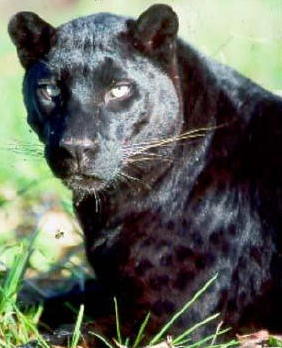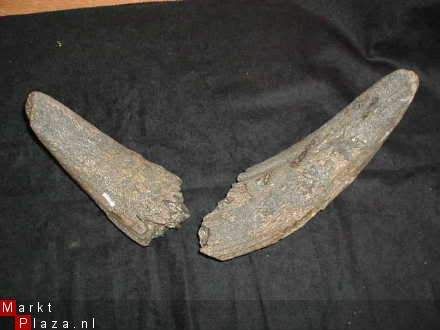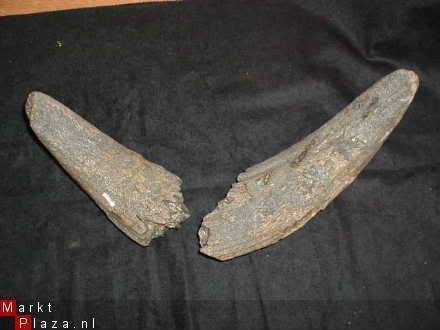Post by Peter on Mar 23, 2005 16:01:46 GMT
Actually the only information I have on this extinct subspecies of the European Bison or Wisent.
Quote from biphost.spray.se/bison-info/bne_195.htm:
1987 some 1,500 Hybrides from US Bison were reported in the Caucasian mountains. Their destiny - after the fall of the UdSSR - seems uncertain. The same year Prof. Pucek mentions a Bison bonasus hungarorum, to be found in Carpathia and Transylvania. The name might indicate, that it could be a hybrid crossbred with Hungarian cattle. I will look into this.
(I did and the result you will find mentioned in Newsletter 2/95).
In NL 1/95 I expressed bad knowledge about a subspecie "hungarorum".
The name relates to Hungary and the southern part of the Carpathian mountains (Siebenbürgen) - today the border Ungary/Romania. This Bison is extinct early 1790th.
In "Annales Historica-Naturales Musei Nationales Hungarici, Vol 39, No 5-6, P 105-111, Budapest 1946" M. Kretzoi writes - condensed - "Based on a skeleton from a femal Bison, with no horns and the scull of a male Bison with one horn and
comparing with paintings in Vienna from the 17th and 18th centuries, it is possible to claim that the Carpathian mountains once was populated with a subspecie of Bison bonasus. Compared with the caucasicus one finds
1) the ends of the horns are turned backwards
2) shoulder height compared to the pelvis is much lower - almost like cattle
3) the animal is much smaller
To introduce a sub-specie on the very limited material at hand seems very doubtful. The forms of the horns (1) is to be found not only with 3 populations in Sweden - actually with a common ancestor - but also in the Wolin National Park. Asked about this form of the horns, the Polish Bison specialists present, declared this to be just "a variety."
Indeed, it can not be excluded that the horns do originate from a sub-specie "hungarorum", since some biologists think it quite possible that Bison and Auerochs did crossbreed, what might have given a Bos profile to the back.
But how do we know that it was extinct in 1790?
That is easy - Kretzoi refers to Vienna, but few people know that this centre of European culture up till 1796 possessed a theater for animal fights - a tradition picked up from the Roman gladiator games. The theater burnt down in 1796. European Bison was a popular adversary to - mainly dogs - and they were supplied by the Hungarians catching them in Siebenbürgen. 1790 the "game master" in Vienna is worried about the long transports of Bison from Lithuania. He had been told that the last Bison in the Carpathian mountains had died.
In spring 1995 I was busy for a week sorting and classifying Bison bones in the Museum of Natural History in Vienna. This occupation got a new dimension when news reached me that MISKA had popped up again - having been lost for 100 years (later I had to accept the fact, that his presence had been reported in scientific papers some years earlier).
At the fire of the theater in Vienna one Bison bull lost his home and was transferred to the Imperial Animal Garden at Schönbrunn. He became the pet of the Viennese under the name of MISKA. He finally died and obviously got a proper funeral, because when Napoleon some years later"visited" Vienna he had MISKA collected (dug up?) and transported to Paris, where he was put together and exhibited. And disappeared! Now he is back - there is no doubt about it - it is MISKA they found in a crate and he should be a complete (?) "hungarorum", eligable to the curiosity of osteologists.
This is how MISKA became part of science instead of a nice story, that I had planned.
Quote from biphost.spray.se/bison-info/bne_195.htm:
1987 some 1,500 Hybrides from US Bison were reported in the Caucasian mountains. Their destiny - after the fall of the UdSSR - seems uncertain. The same year Prof. Pucek mentions a Bison bonasus hungarorum, to be found in Carpathia and Transylvania. The name might indicate, that it could be a hybrid crossbred with Hungarian cattle. I will look into this.
(I did and the result you will find mentioned in Newsletter 2/95).
In NL 1/95 I expressed bad knowledge about a subspecie "hungarorum".
The name relates to Hungary and the southern part of the Carpathian mountains (Siebenbürgen) - today the border Ungary/Romania. This Bison is extinct early 1790th.
In "Annales Historica-Naturales Musei Nationales Hungarici, Vol 39, No 5-6, P 105-111, Budapest 1946" M. Kretzoi writes - condensed - "Based on a skeleton from a femal Bison, with no horns and the scull of a male Bison with one horn and
comparing with paintings in Vienna from the 17th and 18th centuries, it is possible to claim that the Carpathian mountains once was populated with a subspecie of Bison bonasus. Compared with the caucasicus one finds
1) the ends of the horns are turned backwards
2) shoulder height compared to the pelvis is much lower - almost like cattle
3) the animal is much smaller
To introduce a sub-specie on the very limited material at hand seems very doubtful. The forms of the horns (1) is to be found not only with 3 populations in Sweden - actually with a common ancestor - but also in the Wolin National Park. Asked about this form of the horns, the Polish Bison specialists present, declared this to be just "a variety."
Indeed, it can not be excluded that the horns do originate from a sub-specie "hungarorum", since some biologists think it quite possible that Bison and Auerochs did crossbreed, what might have given a Bos profile to the back.
But how do we know that it was extinct in 1790?
That is easy - Kretzoi refers to Vienna, but few people know that this centre of European culture up till 1796 possessed a theater for animal fights - a tradition picked up from the Roman gladiator games. The theater burnt down in 1796. European Bison was a popular adversary to - mainly dogs - and they were supplied by the Hungarians catching them in Siebenbürgen. 1790 the "game master" in Vienna is worried about the long transports of Bison from Lithuania. He had been told that the last Bison in the Carpathian mountains had died.
In spring 1995 I was busy for a week sorting and classifying Bison bones in the Museum of Natural History in Vienna. This occupation got a new dimension when news reached me that MISKA had popped up again - having been lost for 100 years (later I had to accept the fact, that his presence had been reported in scientific papers some years earlier).
At the fire of the theater in Vienna one Bison bull lost his home and was transferred to the Imperial Animal Garden at Schönbrunn. He became the pet of the Viennese under the name of MISKA. He finally died and obviously got a proper funeral, because when Napoleon some years later"visited" Vienna he had MISKA collected (dug up?) and transported to Paris, where he was put together and exhibited. And disappeared! Now he is back - there is no doubt about it - it is MISKA they found in a crate and he should be a complete (?) "hungarorum", eligable to the curiosity of osteologists.
This is how MISKA became part of science instead of a nice story, that I had planned.



 ?
?









